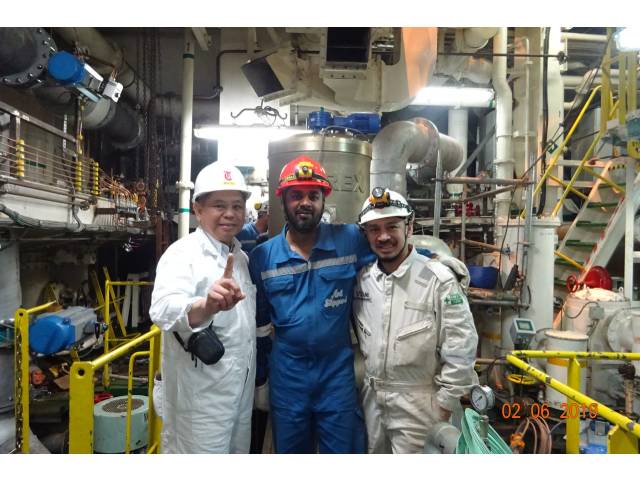As RightShip moves from a Risk Rating to a Safety Score, vetting superintendent Ashvin Ramachandran reflects on his time as a Chief Engineer at sea and highlights the value of preventive maintenance in keeping vessels and crews safe.
I graduated as a marine engineer in early 2000 and when I started my career at sea, the software for the Planned Maintenance System (PMS) was getting rolled out. According to the International Safety Management (ISM) code, a PMS is mandatory. But I don’t believe it should be employed just to meet a standard, it is an investment in protecting crew, machinery and enhancing ship operation efficiently.
During the inception, more than 90% of vessel operators were using a paper-based PMS system. Early in my career, when paper-based PMS was getting migrated to PMS software in Windows 2000, I worked with a company that was implementing PMS software as pioneer onboard vessels. In the paper-based PMS, only major jobs were noted down. There were lots of accidents and incidents using the paper-based system, particularly on auxiliary machinery. The maintenance, running hours, history of boiler, compressor, pumps (other auxiliary machinery) in the engine room were not getting captured. But in the new PMS software these were documented and thereby maintenance was planned methodically.
After my ER work each day, I would spend my post supper time to key in the machinery details, maintenance history and frequency data into our new software system from the machinery template, Maker manual and other available records onboard. So it was used more conclusively and productively to track each machinery maintenance history and foresee upcoming maintenance jobs too.
Why preventative maintenance is better than reactive repairs / breakdown maintenance
It’s always desirable to do preventive maintenance as compared to breakdown maintenance. It is easy to honour the PMS and plan jobs well in advance. You don’t want to be in a situation where you need a spare part and it’s not available onboard for carrying out maintenance. The spares for the present month overhaul are ordered and supplied onboard – and cost effectively – using a stores / spares order from the previous financial quarter. Hence the job plan for the current month is created three months in advance for effective implementation and completion onboard.
When I was a Chief Engineer, I would take out the PMS on the first day of each month and plan for implementation over the complete month. We had a better sense of what was on our plate, established ways to use time effectively and prevent unexpected incidents. When a ship is doing the PMS correctly, there are less insurance claims and the charterer gets the benefit of a more efficient voyage with no stoppages.
Planned maintenance is better than breakdown maintenance. I learnt this in a hard way during my Cadetship when, due to ineffective PMS, one of our main air compressors seized during a crucial channel passage in South America. This made us manoeuvre with only one (less efficient) main air compressor throughout the coasting port calls with salvage parts from broken compressor. There were unexpected delays and off-hire and crew rest hours were affected. We had to wait for the required spare parts for nearly a month until we reached a convenient port on the other side of the globe. From then on, I relied on the PMS with strict discipline.
RightShip’s Safety Score will encourage preventive maintenance
In the 2019 Safety and Shipping Review, AGCS analysed 26,022 shipping incidents between January 2009 and December 2018. Of these incidents, more than a third (34%) were caused by machinery damage or breakdown. These issues can be avoided when routine and planned maintenance is done diligently.
The Safety Score encourages such action and will therefore help ship operators to see the benefits of creating safety processes that prevent incidents, which can lead to a better Safety Score. When owners have a strong PMS in place, all stakeholders benefit.
Rigorous PMS measures will give owners a better Safety Score, in turn making them attractive to charterers. However, the owner also benefits from savings by steering away from breakdown maintenance. Terminal turnaround time is enhanced when there are no unexpected stoppages or delays due to such machinery failure and insurance claims are diminished too.
In summary, a good Safety Score doesn’t just improve an owner’s chances of gaining a charter, it has financial and safety benefits at all levels of the supply chain.
Source: Rightship









































